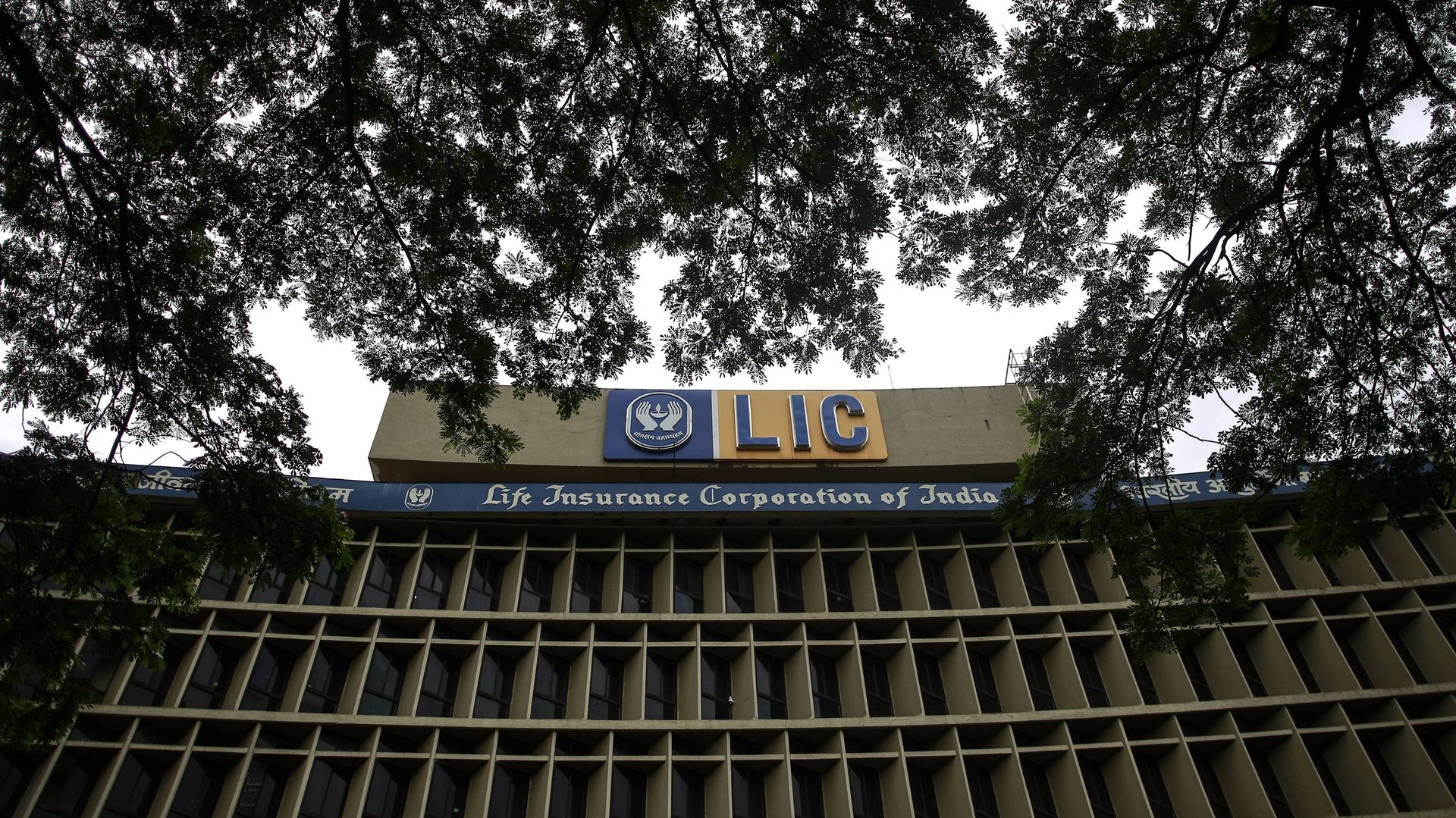India has a stretch goal for the IPO valuation of its state insurance giant
India has an ambitious plan to list its largest and oldest state-run insurer, Life Insurance Corporation (LIC), and add billions of dollars to its public revenues.


India has an ambitious plan to list its largest and oldest state-run insurer, Life Insurance Corporation (LIC), and add billions of dollars to its public revenues.
LIC is expected to file a draft red herring prospectus for the IPO with India’s markets regulator on Jan. 31, detailing the final offer size, valuation, and the dates of the issue. The IPO—set to be the biggest in India’s stock market history—could happen as soon as by the end of March.
In recent months, LIC’s valuation has been a topic of increasing speculation, especially after the IPO of the country’s largest unicorn, Paytm stalled investor enthusiasm. Media reports, in recent months, have said the government hopes to raise up to 1 lakh crore rupees (1 trillion rupees or $13.5 billion) from the LIC offer. A Bloomberg report this week, citing unnamed sources, said India is pushing for a valuation of as much as Rs15 lakh crore ($203 billion) for LIC.
What’s the fair value for LIC?
A successful public offer of LIC is crucial for the government to meet its disinvestment target of Rs1.75 lakh crore for the ongoing financial year, which ends March 31. This year, so far, the government has raised Rs9,330 crore through the disinvestment of public sector units. The LIC IPO is expected to make up the shortfall.
The 65-year-old insurance company commands a 66% share in the first-year premium insurance policy market in India, and manages assets of $500 billion. During the financial year that ended on March 31, 2021, LIC registered a growth of 3.48% in new business, collecting a record Rs1.84 lakh crore (pdf) in premiums on first-time policies.
“LIC has been able to hold the fort despite a host of private [players] coming in aggressively,” said Ambareesh Baliga, an independent market analyst.
But a valuation of $200 billion could nevertheless be something of a stretch goal since it’s about 30% more than what the market has been expecting, said Baliga. For comparison, India’s largest firm, the conglomerate Reliance Industries, has a market cap of about $215 billion.
Market analysts Quartz spoke to estimate the market value of LIC should be closer to Rs11 lakh crore ($150 billion).
News reports say a government-appointed actuary has calculated an embedded value of 4-5 lakh crore rupees (4 trillion rupees is $54 billion). Embedded value, a valuation measure for life insurers, is based on the current value of future profits combined with the net value of assets. The market value of other Indian private life insurers ranges from three to six times the embedded value, and the lower end of that range would put LIC’s value at $150 billion. But, some have argued that LIC’s multiple would be even lower given expenses from its large agent base, its investment holdings in other public sector firms, and differences between its products and those of private firms.
India’s department for divestment didn’t immediately reply to a request for comment.
Lessons for LIC from Paytm, India Railways IPOs
Given that LIC has millions of policyholders and there is a possibility they may enjoy a discount on the share price, analysts expect solid demand for the IPO from retail customers. The government is also in the process of tweaking FDI rules so as to allow 20% foreign direct investment in the company, whose position as the market leader in India’s insurance industry may garner support from institutional and anchor investors from across the world.
However, Baliga, the analyst, believes that while the LIC offer should be oversubscribed by investors—both foreign and domestic—they tend to be deterred when they believe listing gains will be limited. That is what happened to Paytm’s IPO, too.
Apart from a bleak outlook on profitability, analysts had cited the expensive valuation of $16 billion for the loss-making fintech company before its listing in November. As of Jan. 13, shares of One97 Communications, the parent company of Paytm, slumped 51% from its issue price of Rs2,150.
“The government wants to leave something on the table for investors. A trimmed issue will leave a decent headroom,” said Rajeev Shah, managing director, and chief executive officer at Mumbai-based RBSA Advisors told The Economic Times newspaper in March. “However, the government does not want to undervalue the asset, as it had done in the case of IRCTC.”
Shah was referring to another crown jewel in India’s legacy of businaesses, the Indian Railways, formally known as the Indian Railway Catering and Tourism Corporation (IRCTC), which was listed in 2019 and was undersold. The government was slammed for valuing the railway company at just $700 million when it listed at two times of that. Currently, its market capitalisation stands at Rs1 lakh crore ($13.5 billion).